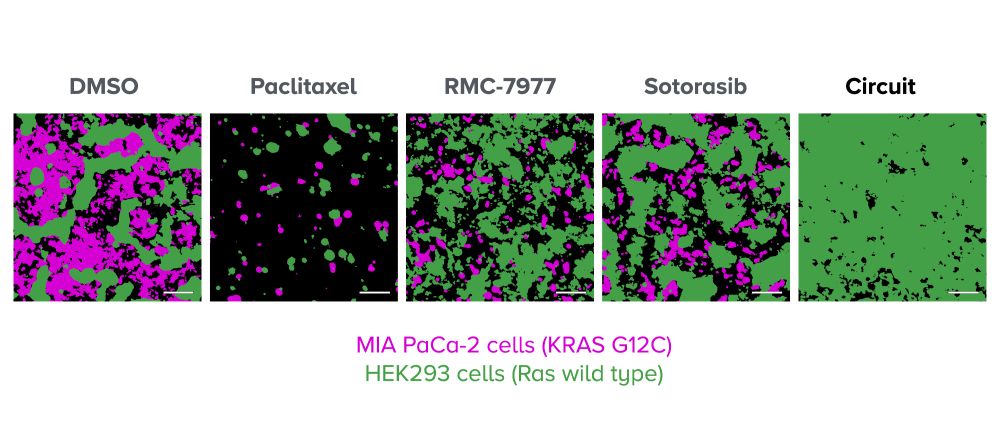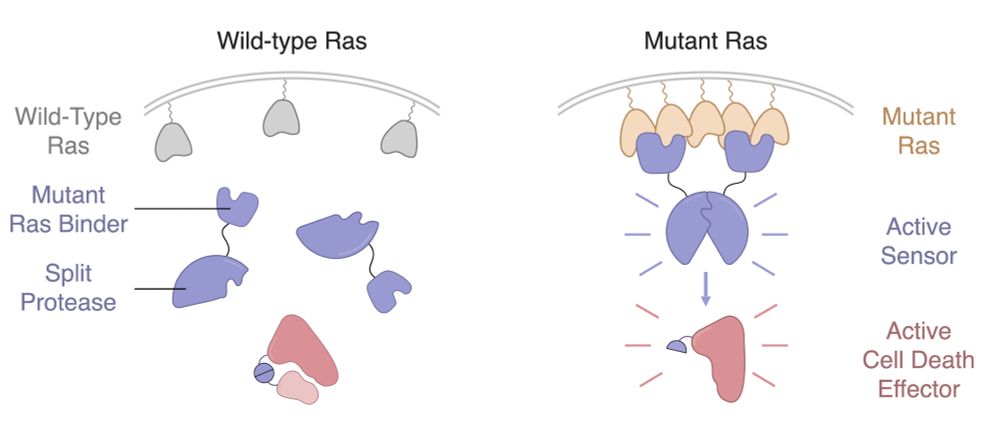
Hao Zhu and Dan Siegwart at UTSW.
If you have experience in animal cancer models and are interested in circuit therapeutics, please reach out.
Hao Zhu and Dan Siegwart at UTSW.
If you have experience in animal cancer models and are interested in circuit therapeutics, please reach out.



Sense-and-kill ≠ inhibit. Oncogene inhibition indirectly induces cell death, but is susceptible to resistance through compensatory signaling. Circuits directly rewire oncogenes to cell death --> less chance of resistance. Other benefits as well.
Sense-and-kill ≠ inhibit. Oncogene inhibition indirectly induces cell death, but is susceptible to resistance through compensatory signaling. Circuits directly rewire oncogenes to cell death --> less chance of resistance. Other benefits as well.


